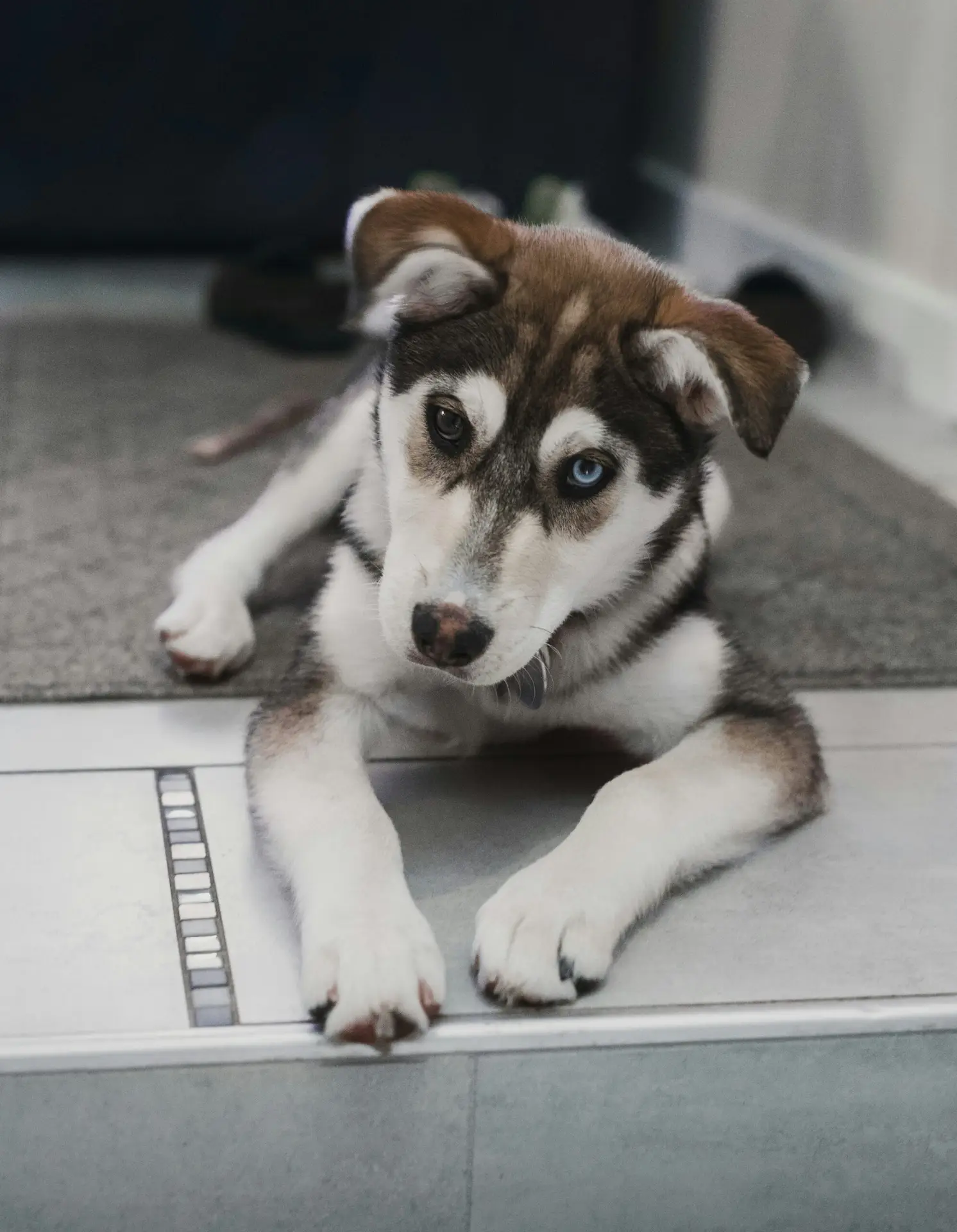If you’ve ever owned a puppy or spent time around one, you may have wondered whether they see the world in the same way we do. One common question that often comes up is whether or not puppies are color blind. In this article, we’ll explore the science behind a puppy’s vision and answer the question: are puppies color blind?
What Is Color Blindness in puppies?
Color blindness in dogs or puppies is a condition in which dogs are unable to see certain colors or have difficulty distinguishing between colors in the same way that humans do. Similar to humans, color vision in dogs is also determined by the presence of specialized cells in the retina of the eye called cones.
Dogs have fewer cones than humans, with only two types of cones compared to the three types that humans have. This means that dogs have a more limited color vision than humans, and are considered to be dichromatic, meaning they can only see shades of blue and yellow.
Like humans, the most common form of color blindness in dogs is red-green color blindness. This means that dogs have difficulty distinguishing between red and green colors, and may see these colors as shades of gray. This can affect their ability to differentiate between certain toys or objects, which can be important in training and playtime.
While color blindness in puppies may seem like a disadvantage, it is important to remember that dogs rely more on their sense of smell and hearing than on their vision. In fact, dogs have an excellent sense of smell and can detect scents that are thousands of times weaker than what humans can detect. This means that even if they have limited color vision, dogs are still able to navigate and interact with their environment effectively.
It is also worth noting that not all dogs are color blind, and some breeds may have better color vision than others. For example, breeds such as the Australian Shepherd and the Siberian Husky are thought to have better color vision than other breeds.
The Truth About a Puppy’s Color Vision
In fact, puppies are not completely color blind, as some people may believe. Puppies are able to see colors, but their color vision is not as advanced as that of humans. This is because they have only two types of color receptors or cones in their eyes, while humans have three types.
Research suggests that puppies are dichromatic, meaning they can see only two primary colors: blue-violet and yellow-green. They cannot distinguish between red and green, which is a common form of color blindness in humans. However, they are not completely colorblind as they are able to see some colors.
While puppies may not see the full range of colors that humans do, their vision is still sufficient for them to navigate the world around them. In fact, puppies may be better at distinguishing between shades of blue than humans are, as their eyes are more sensitive to the blue-violet end of the spectrum.
Understanding a puppy’s color vision can help you better understand their behavior and interactions with their environment. For example, knowing that they cannot distinguish between red and green may help explain why they may have trouble differentiating between certain toys or objects. Additionally, understanding their sensitivity to blue-violet can help you choose toys or other items that may be more visually stimulating for them.
Why Does Color Vision Matter for Puppies?
Color vision is an important sense for many animals, including puppies. It helps them to distinguish between objects and identify things like food and predators. While puppies may not see the full range of colors that humans do, their vision is still sufficient for them to navigate the world around them.
In fact, some research has shown that puppies may actually be better at distinguishing between shades of blue than humans are. This may be because their eyes are more sensitive to the blue-violet end of the spectrum.
How Dogs See the World?
While dogs cannot see the full spectrum of colors that humans can, they are not completely color blind. Dogs can see shades of blue and yellow and are able to distinguish between them. This means that they can see objects that are blue or yellow in color, such as a blue ball or a yellow frisbee.
Research has also suggested that dogs may be able to see some shades of green, although this is still debated among scientists. Some studies have shown that dogs may be able to distinguish between green and gray, while others have suggested that dogs may see green as a shade of yellow.
Overall, while dogs cannot see the full range of colors that humans can, they are still able to navigate and interact with their environment effectively using their sense of smell, hearing, and limited color vision.
Bottom line
So, are puppies color blind? The answer is no, but their color vision is more limited than that of humans. Puppies are dichromatic and can only see two primary colors: blue-violet and yellow-green. They are not able to see the full range of colors that humans can, and they cannot distinguish between red and green. However, this does not mean that puppies have poor vision overall. Their vision is adapted to help them navigate the world around them, and they are able to see well enough to identify food, predators, and other important objects.
If you’re a puppy owner, understanding your furry friend’s vision can help you better understand their behavior and interactions with their environment. While puppies may not see the world in the same way we do, they still have a unique perspective on the world around them.






